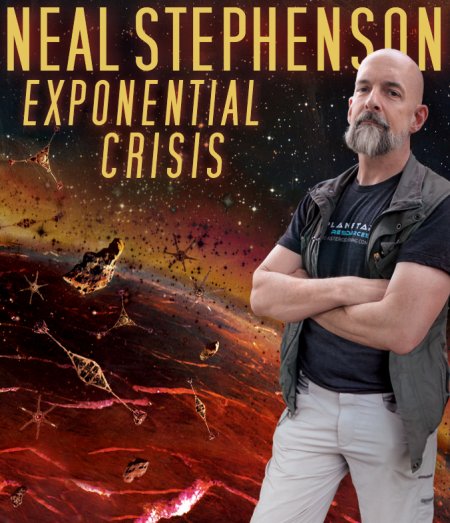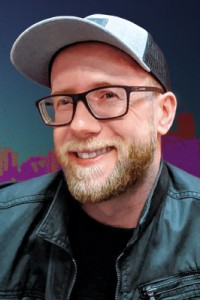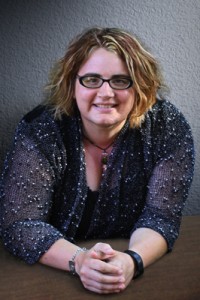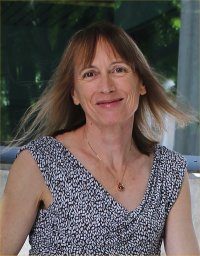Neal Stephenson: Exponential Crisis

Neal Town Stephenson was born October 31, 1959 in Fort Meade MD, and grew up in Iowa. In 1981 he graduated from Boston University with a BA in geography and a minor in physics.
His first novel The Big U, a college thriller with SF elements, appeared in 1984, followed by Zodiac: The Eco-Thriller (1988). The successful and influential Snow Crash (1992) is a cyberpunk classic, and made him a star in the SF world. He wrote two thrillers in collaboration with his uncle, George Jewsbury, under the name Stephen Bury: Interface (1994) and Cobweb (1996). Concurrently he produced the Hugo and Locus Award-winning novel The Diamond Age (1995). In 1999 he broke new ground with Locus Award winner Cryptonomicon, his massive, Pynchonesque novel of history and cryptography, which proved quite popular with SF fans. Later that year he published In the Beginning… Was the Command Line, an often humorous non-fiction commentary on computers and culture that originally appeared in shortened form on the Internet. He contributed articles to Wired, and some of his non-fiction was collected in Some Remarks: Essays and Other Writing (2012).
Stephenson spent seven years at work on his vast three-volume Baroque Cycle, which includes the Arthur C. Clarke Award-winning Quicksilver (2003), The Confusion (2004), and The System of the World (2004). These books, set in the 17th century and featuring historical characters like Leibniz and Newton along with the ancestors of characters from Cryptonomicon, pushed the boundaries of SF. Anathem (2008) is another long, complex book, and more purely SF; it was a finalist for Clarke, Hugo, and Campbell Memorial Awards. Reamde (2011) is a thriller with cutting-edge technological elements. Newest novel Seveneves (2014) is a saga that spans millennia, about a space ark launched in the midst of a global catastrophe. Fall, featuring some characters from Reamde, is forthcoming.
With Greg Bear and other writers he collaborated on serialized historical adventure The Mongoliad (2010-2012). He founded Project Hieroglyph – an initiative devoted to writing plausible, optimistic, near-future SF – in partnership with Arizona State University in 2011. The project’s first publication was anthology Hieroglyph, edited by Kathryn Cramer & Ed Finn (2014).
Stephenson lives in the Pacific Northwest with his wife (married 1985).
Excerpts from the interview:
‘‘The idea for the disaster in Seveneves came from some research on the problem of debris in low earth orbit, suggesting that when two of these objects happen to hit each other, because they’re moving at incredibly high relative velocities, they tend to shatter and make more fragments. It runs the risk of becoming an exponential phenomenon, putting so much debris in lower orbit, that we couldn’t use space anymore. I don’t remember where this research was published, but it was an idea that was in the air. It got a little re-boost coincidentally while I was working on the book. The Chinese military tested an anti-satellite device that went up and struck some target and shattered it into a large number of fragments. The test worked, but it reactivated everyone’s fears about that problem. I’d been thinking it would be interesting to write a Space Ark book. When I was a kid, I read one through the bookmobile in Ames IA – I don’t remember the title or the author, but it made a big impression on me.
‘‘The overall trend of big space stories, at least in media, is very ship-centric, very interstellar-centric. It’s always about the ship, and about traveling to other solar systems.
‘‘I went to the Starship Century conference in San Diego. Freeman Dyson, Robert Zubrin, and Geoff Landis – the whole gang was there. There was a pretty exhaustive survey of all of the ideas people have talked about for going to another star system. Barring some huge advance that we can’t anticipate, you end up sending incredibly tiny payloads quickly, or reasonable sized payloads very, very slowly. The most convincing case was from Freeman Dyson, who has this idea to plant seeds in the iceballs in the Oort cloud. They would grow trees that would have leaves with transparent greenhouse structures that would collect enough light to warm the inside of the iceball. Over time, these trees could gradually propagate through the Oort cloud until it reached halfway to the next star. At some point, you can reach other stars that way. It’s very slow, and way beyond the scale we normally think about. It’s an amazing idea. I was starting to think that maybe the ship-centric model was limiting, that it might be interesting to see what can be produced near Earth, inside the solar system, with no warp drive, no teleportation, and no faster than light travel – something more about habitats and big machines, and less about ships.”
…
‘‘If a global catastrophe happens too fast, you don’t have time to build an ark, and if it comes too slowly, you’ll probably solve the problem. How short term is short term enough to make people take decisive action? How does our perception of risk skew the decisions we make? 9/11 definitely galvanized people, and that was a spectacular event: it was foreign people hurting us at home with fire. Everything about the attack was calculated to have that effect. Climate change is the thing that seems impossible to get people to take concerted action on. In Seveneves I had to fine-tune my end-of-the-world scenario so there was time.”
…
‘‘I always had a clear idea in my head of what the end state was – what the civilization would look like fully formed. That’s the payoff for everything that happens in the first part of the book. Just to end the book with the council of the Seven Eves would be unsatisfying, because you’d want to know what happened next. I wanted to do enough storytelling within the future universe to depict the world, to show all of the different races and subraces that had emerged, and to give some sense of the machinery of how everything works. That was the structure we ended up with – when I say ‘we’ I mean me and my editor Jennifer Brehl.
‘‘People aren’t really that different in that future. This isn’t a social science fiction novel in the sense of describing huge shifts in what it means to be human. To me that felt like a reasonable way to do it. The nature of these people and their situation is, they’re always looking back to the civilization that was before, and that was destroyed. They’re looking back to their respective Eves as the benchmarks for what their roles are, and who they are, and how they should behave. For most of the 5,000-year span that the book covers, they’re trying to stay alive, living in very desperate conditions, and don’t have a lot of decisions to make. Being on a submarine when the depth charges are going off all around you means that not a lot of social development is going to happen. It’s only in the final thousand years or so that they’re starting to build comfortable space habitats where they can have trees and running water, the things that we’re all accustomed to now. It’s a society still shaped by the privations that people went through, and it’s backward-looking in a way.”
…
‘‘We came out with the Hieroglyph anthology last year, and got some interesting stories out of it. It was fascinating to see what different writers chose to do with the basic game plan that we handed to them. Project Hiergolyph emerged from a spontaneous conversation with Michael Crow, the president of Arizona State University, a few years ago. We were talking about the utility, or lack thereof, of science fiction. The question was, ‘Is science fiction useful in any sense beyond just inspiring people to become scientists? Does it shape the direction of technology? Should it try to do so?’ So he, tongue in cheek, issued a challenge, saying the engineers are ready to go, they’ve got tools and are ready to get busy, and they just need science fiction writers to get off their butts and give them some optimistic visions to work towards. We’re really talking about media science fiction more than written science fiction. With written science fiction there’s a tremendous volume of material coming out and a lot of diversity in that material. It’s pointless to make blanket statements, like, you know, ‘Everything’s dystopian.’ It’s not really true. But depictions of the future in movies and video games and TV are almost uniformly dystopian and dark. It would be nice to break that habit.”
…
“There’s something about the nature of argumentation on social media that is a hundred times worse. Just today, I read an article about how the English accent and the American accent have evolved in different ways since Colonial times, which is all based on hard research by PhD linguists. I’m sure it’s all footnoted. Immediately below it there were comments from all these people saying, ‘I don’t agree with that. I think it happened because of this.’ Throwing in their anecdotes, and their personal theories they just made up 30 seconds ago. That’s not helpful.
‘‘I only use social media to announce things. I do outgoing social media; I don’t do incoming social media. It’s the best compromise I can come up with. It’s sort of a ‘damned if you do, damned if you don’t’ kind of thing. I saw some post last year about Seveneves long before it came out, someone was saying, ‘HarperCollins says they’re publishing this book by Neal Stephenson next year. He’s not mentioning it on social media, so there must be a problem he’s not telling us about.’ The best compromise I could come up with was to do the occasional outgoing post to let people know what’s going on, and not get hung up on trying to read and respond in detail. Really smart engineers are tweaking those social media systems, creating this compulsion to respond, and you have to be aware of that fact. The bad and the good are so mixed up with each other. I can check Facebook and see brilliant posts, hilarious witticisms, and important news from my friends, and it’s mixed up with just the most ridiculous bits of fluff and personality quizzes.”
Read the complete interview in the August 2015 issue of Locus Magazine. Interview design by Francesca Myman.






“People aren’t really that different in that future….They’re looking back to their respective Eves as the benchmarks for what their roles are, and who they are, and how they should behave.”
People today haven’t inherited their remote ancestors personality traits. And they don’t look back to a single ancestor for tips on how to live today either. The future generations in Seveneves are more of a genetic determinist fantasy than living characters.
My opinion, of course.